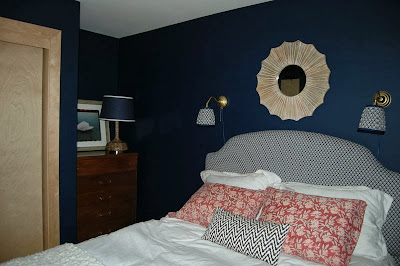Have you read the children's book Big Dog Little Dog? There is a good lesson in it.
A big dog and a little dog (Fred and Ted, if you must know) stay in a hotel. One room has a big bed and one room has a small bed. The big dog ends up in the small bed and vice versa. They toss and turn and sleep terribly all night. The next morning, they go for a walk and swap stories about their challenging night. They are so tired! They can't figure out what to do until a helpful little bird happens by and tells them to--get this--
switch beds. Big bed for big dog, little bed for little dog. And they lived happily ever after.
Here's the thing: the solution was pretty obvious to the bird (and the adult reader), but
not to the dogs. Sometimes we get pretty set in our ways and can't see the obvious solution that is in front of us. Here's a real life example.
We have two clothes hampers in our house. One is sturdy, round, rattan, and sort of heavy. It was a wedding gift from our registry and it is "our" hamper. The other is canvas, lightweight, and embroidered with the word "laundry." I had it made when my older daughter was a baby and it is our daughters' hamper.
Our master bedroom is on the main floor and the laundry room and the girls' room are upstairs. Currently, I haul the heavy hamper up and down the stairs to the laundry room. Then it stays up there--it is big enough to hold a couple of loads of laundry. So we end up tossing our dirty clothes on the floor where the hamper should be. Meanwhile, my girls toss their clothes on the canvas hamper, but since it is soft sides they end up with a big pile of clothes ON TOP of the hamper.
Do you see where this is going?
I switched them. Boom: happily ever after.
Now I carry a light laundry bag up and down the stairs, and since it hold about one load, we don't end up with a pile on the floor. The sturdy rattan hamper stands open at the ready, and my kids can easily toss their clothes in. I didn't think of it three years ago because I had fixed notions of belonging around these hampers, rather than practical notions of function.
This makes me think of
this advice, which is so simple, so obvious, and yet so many of us haven't thought of it or don't follow it.
Tell me: do you have any tips for a functional home that seem obvious but may not be? I'm getting down to brass tacks around here to make things really work for us.

































